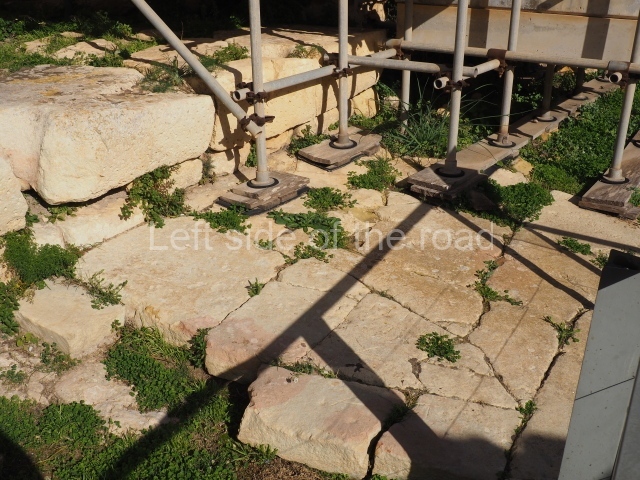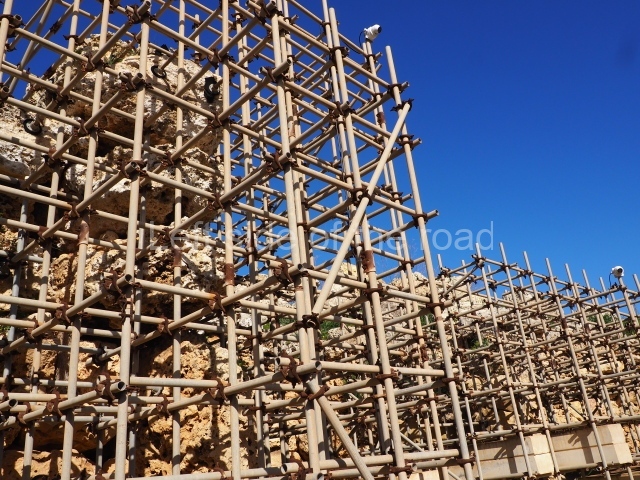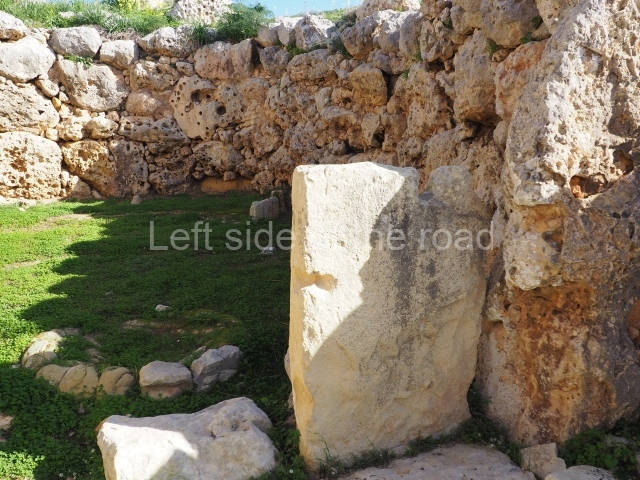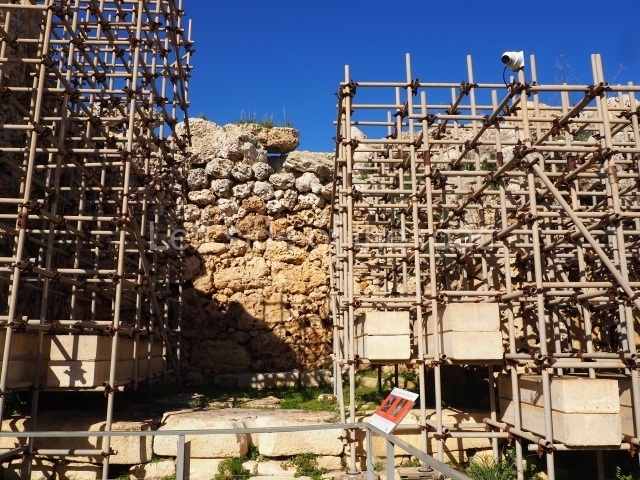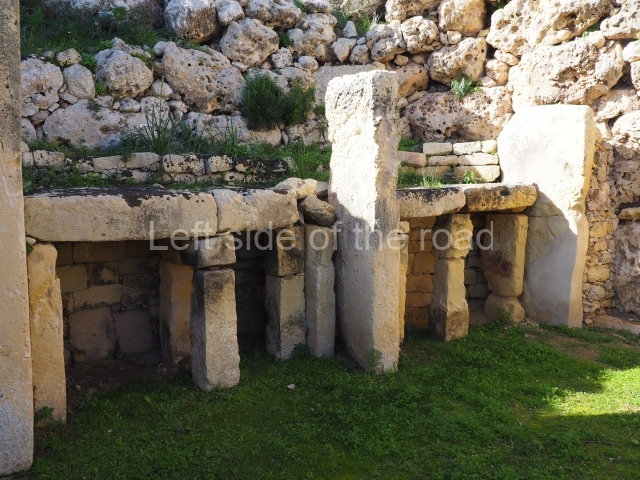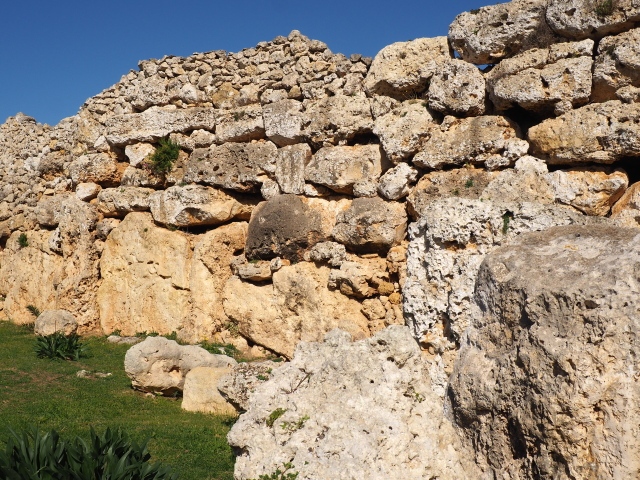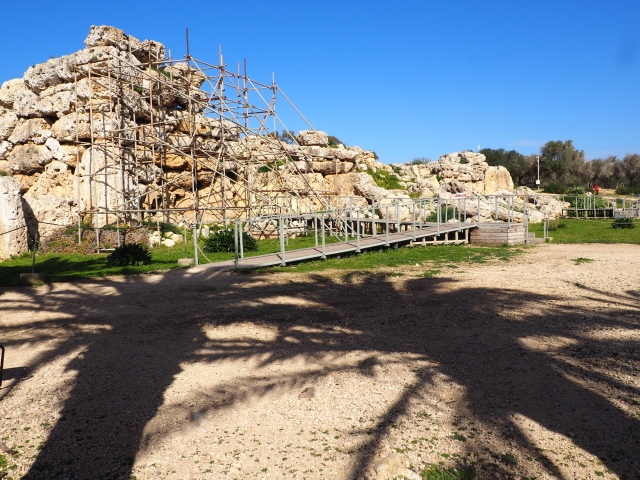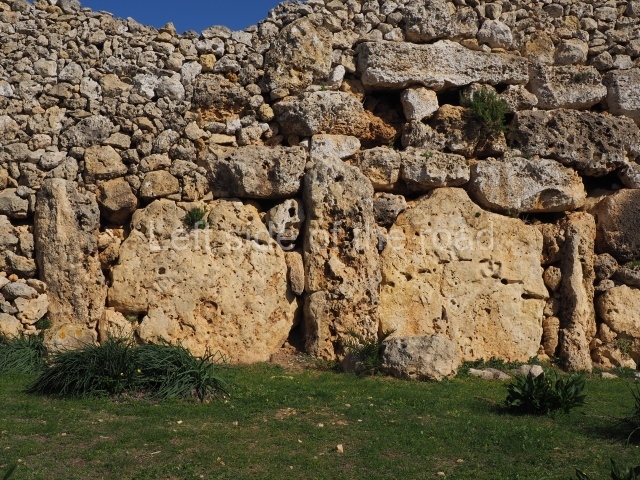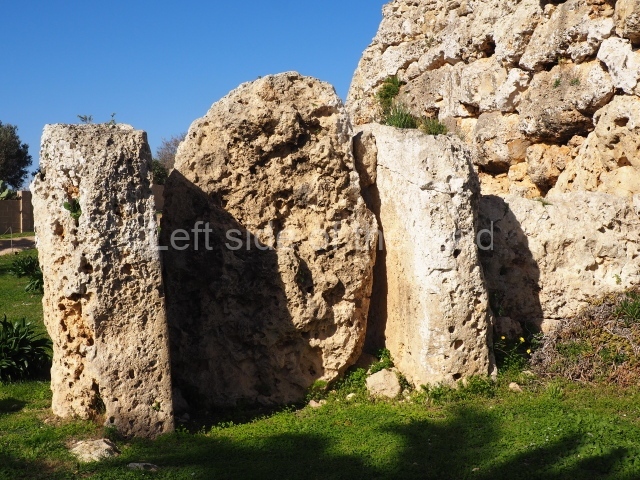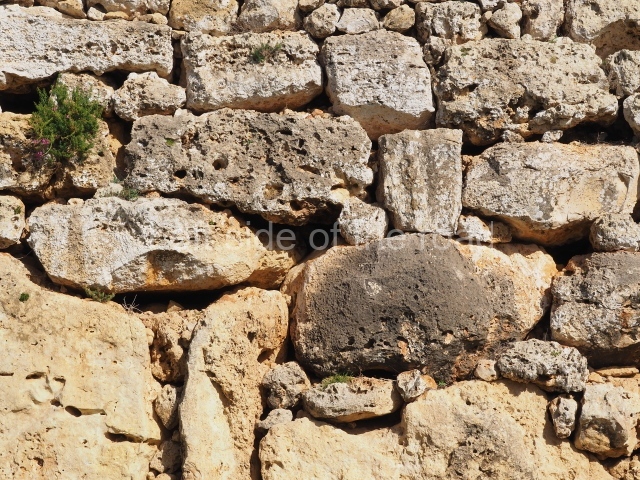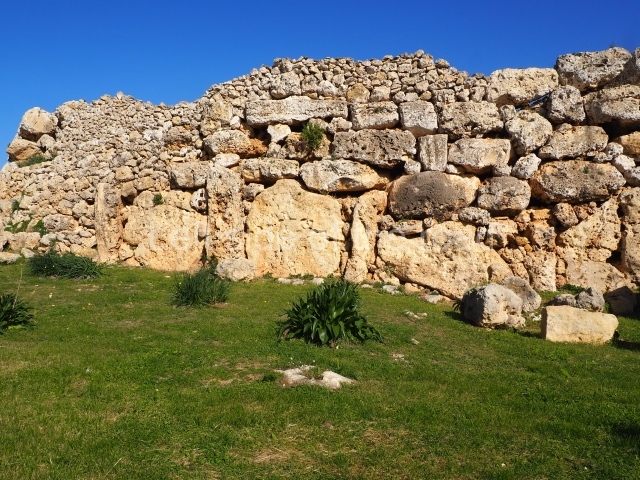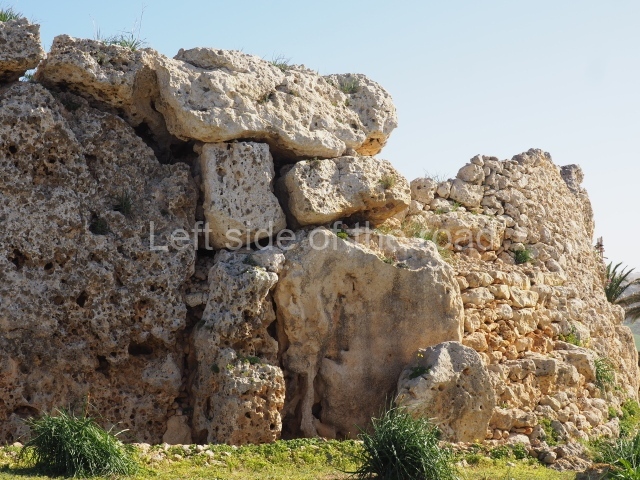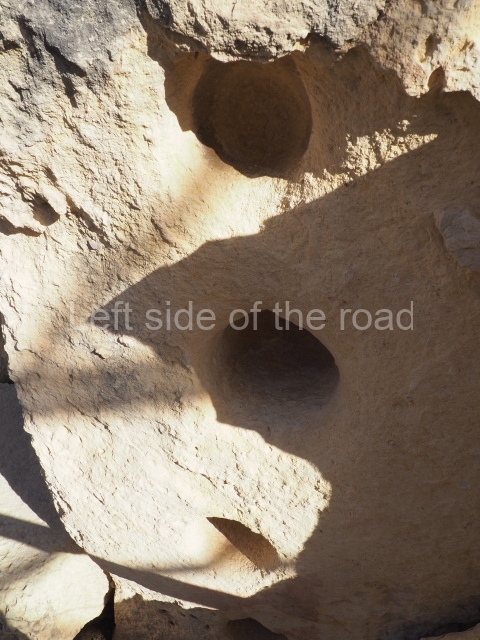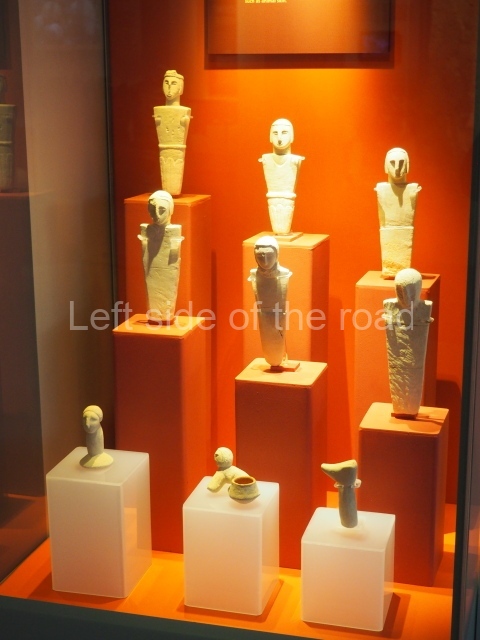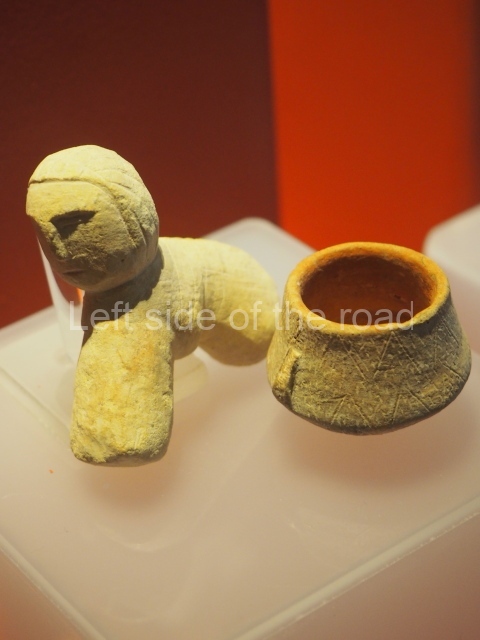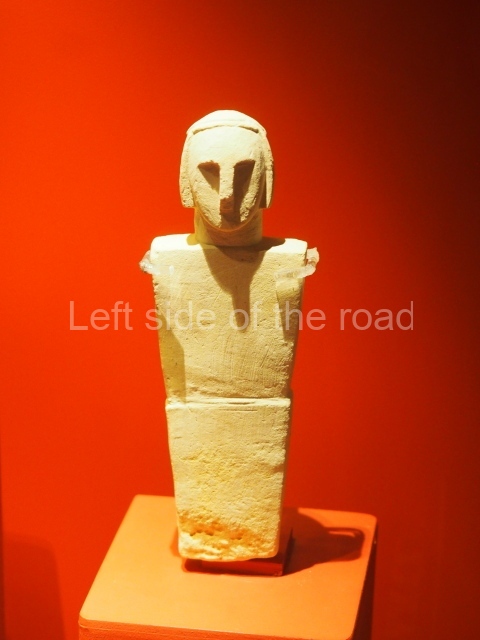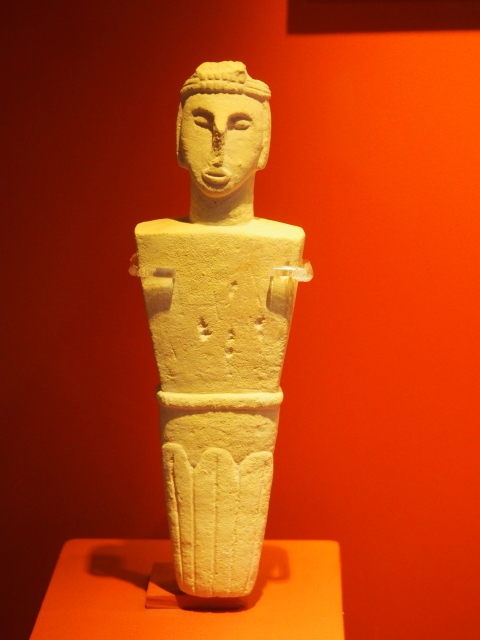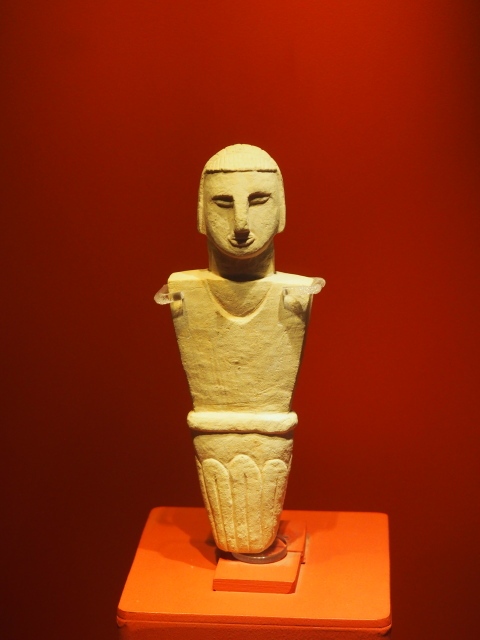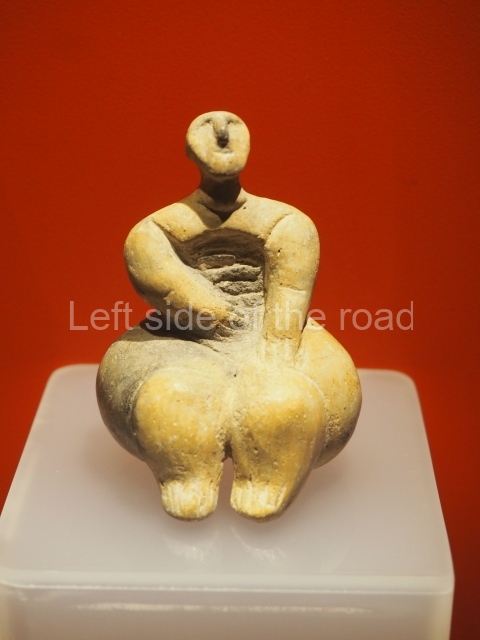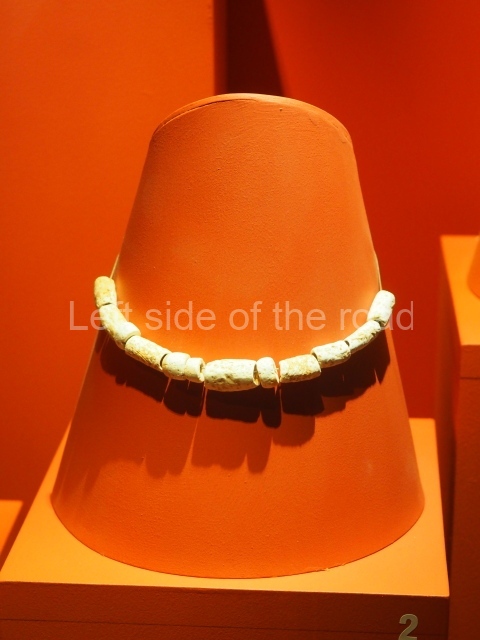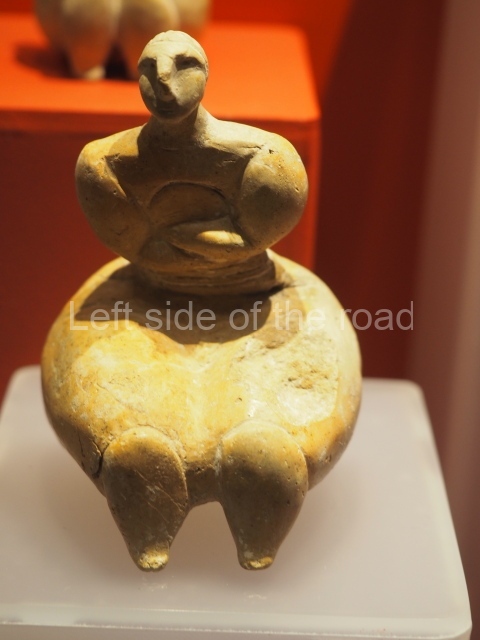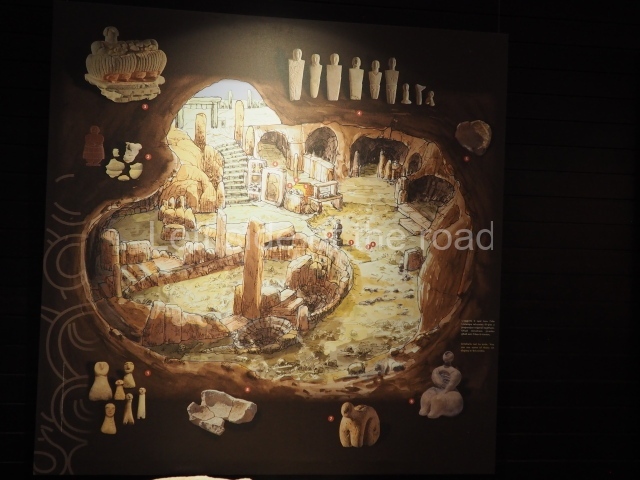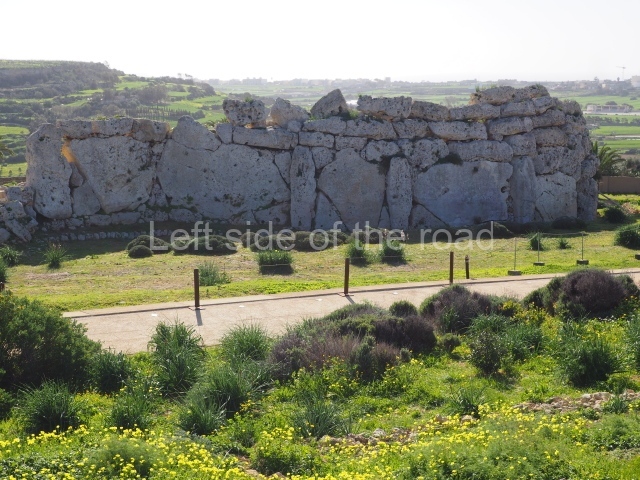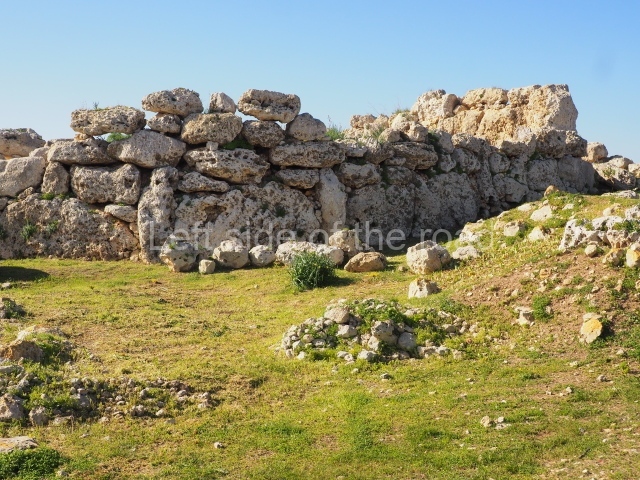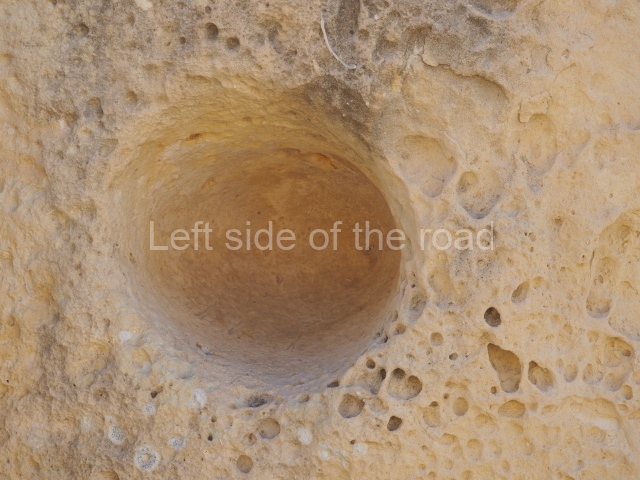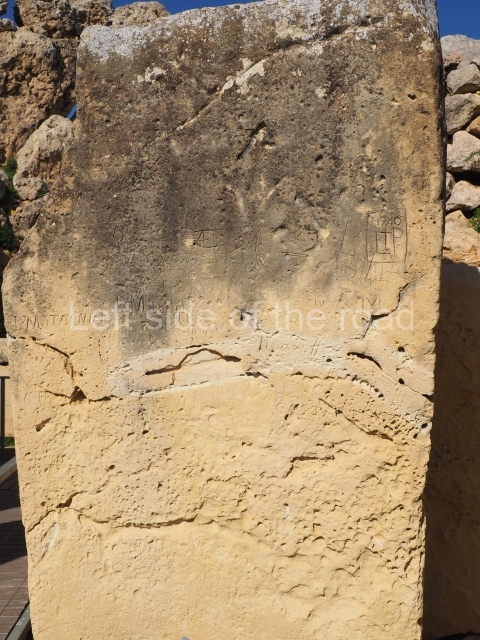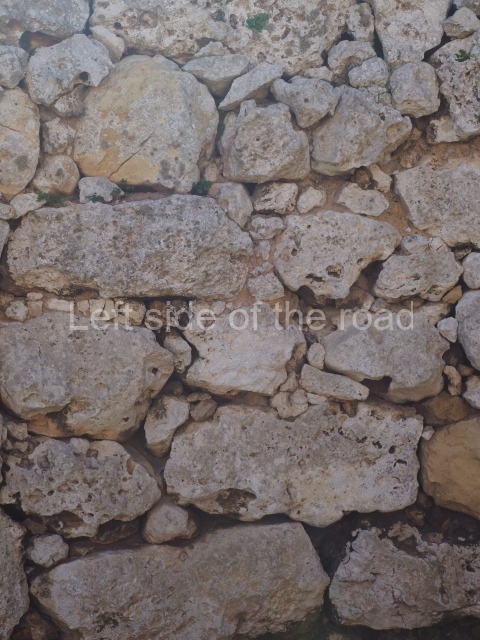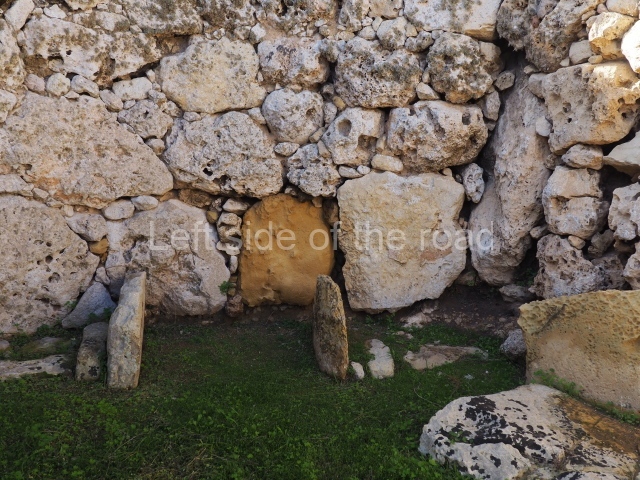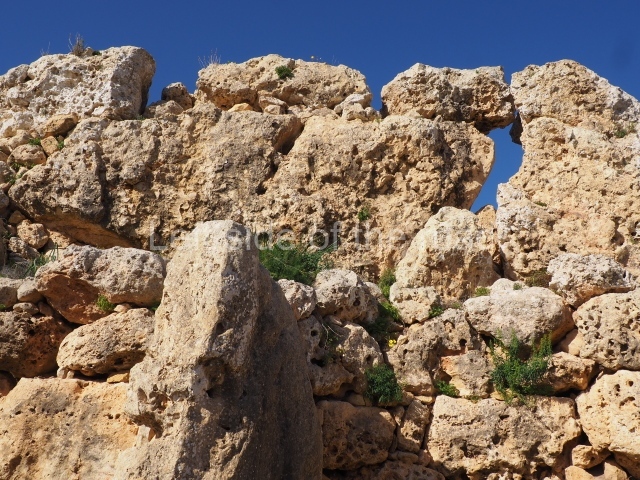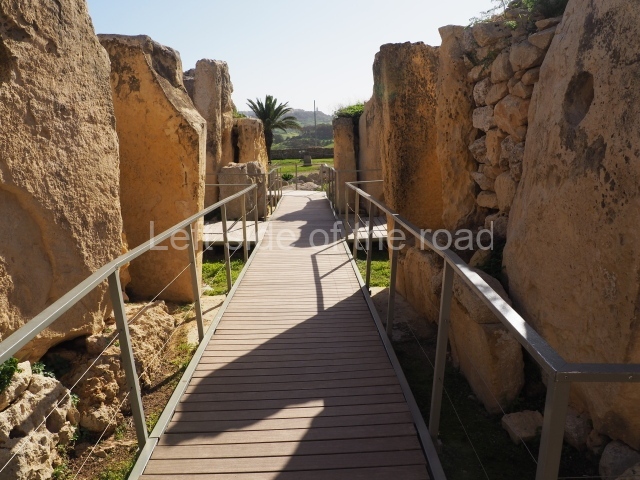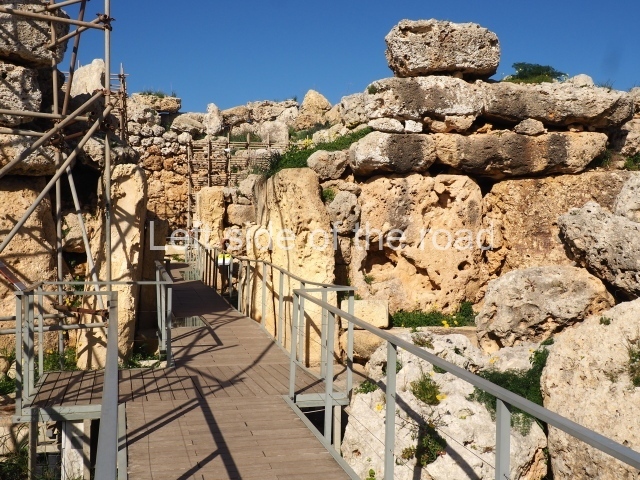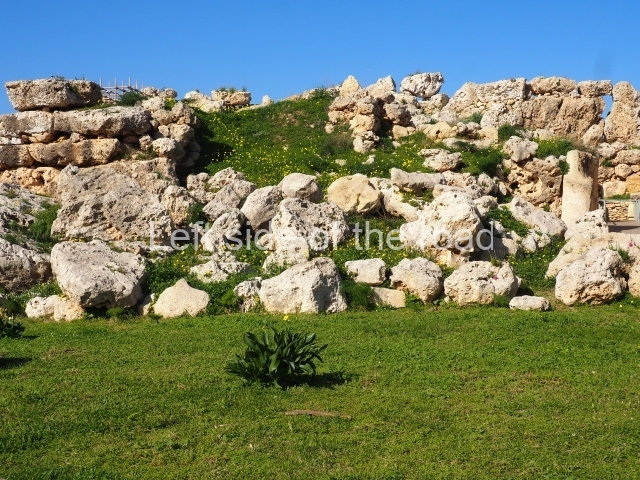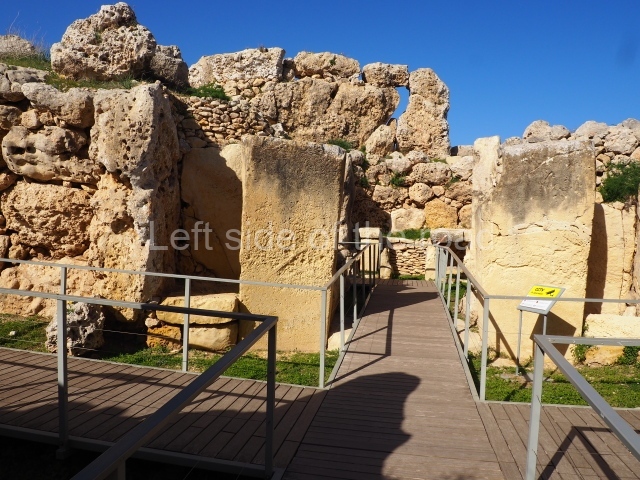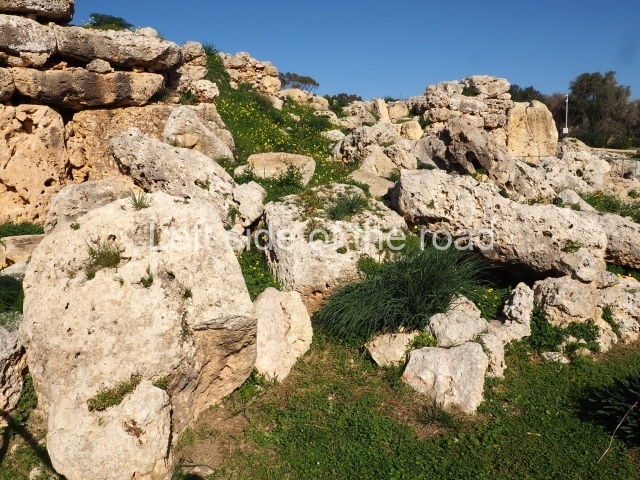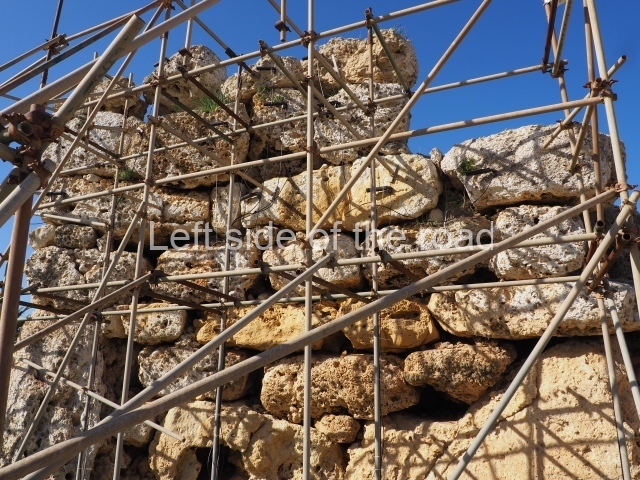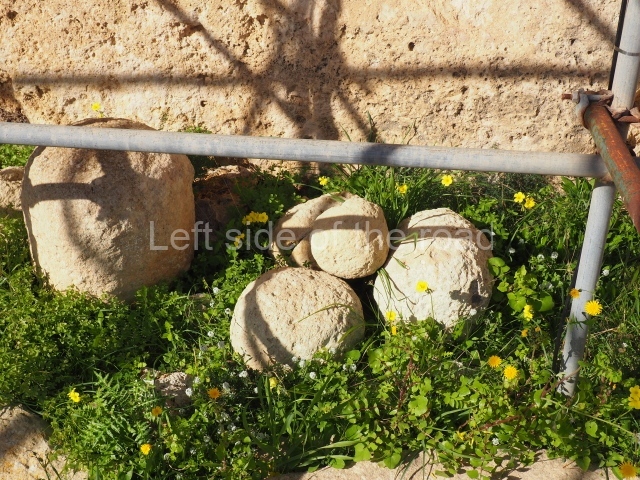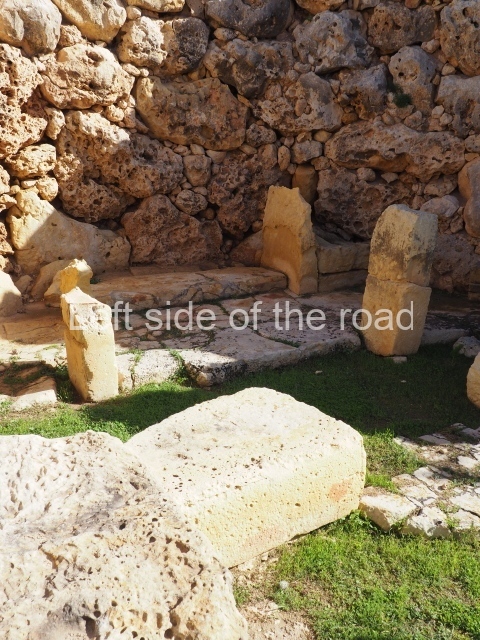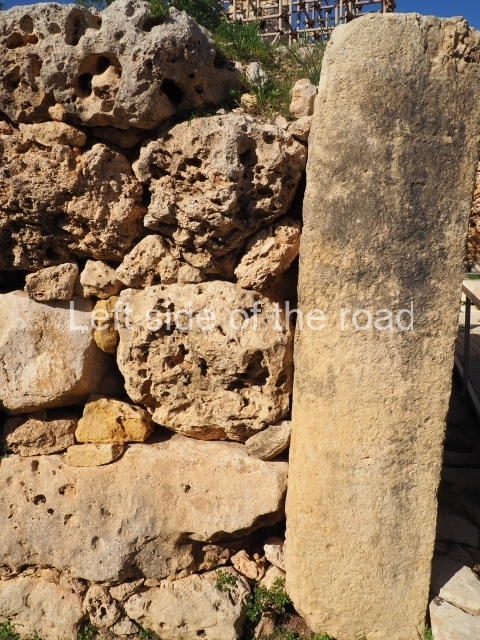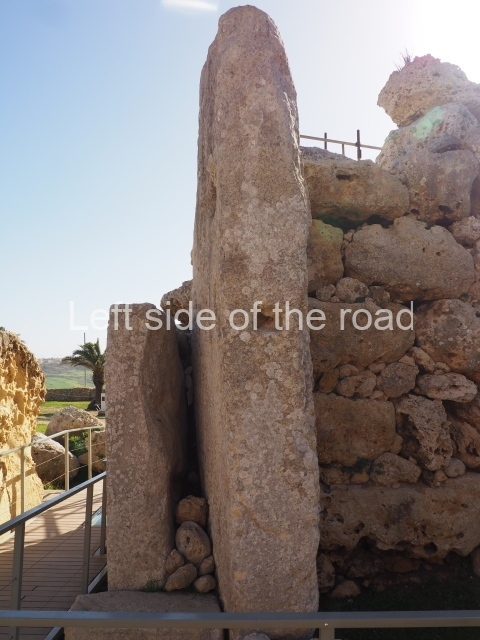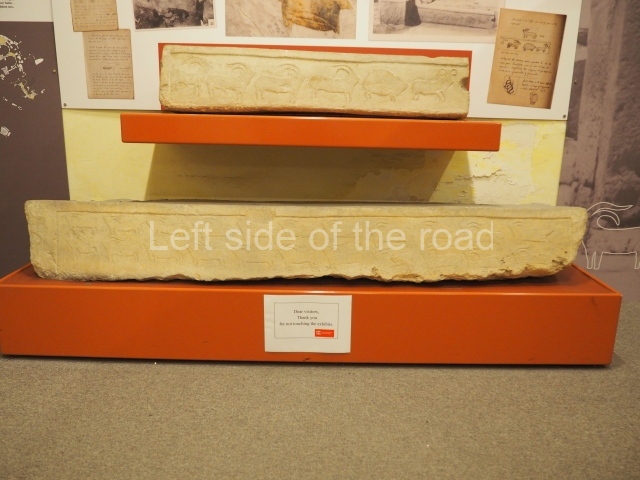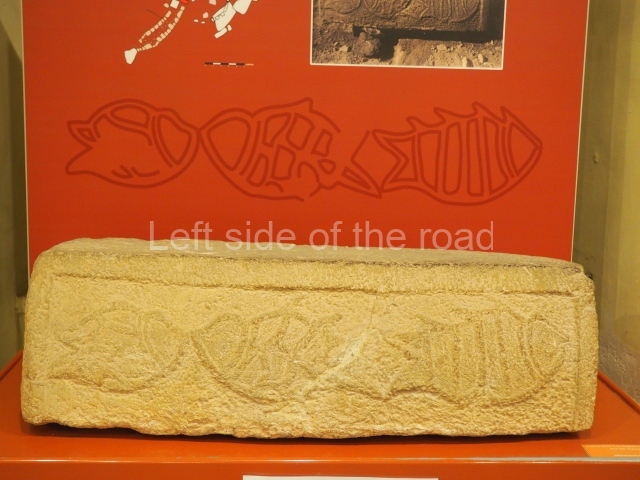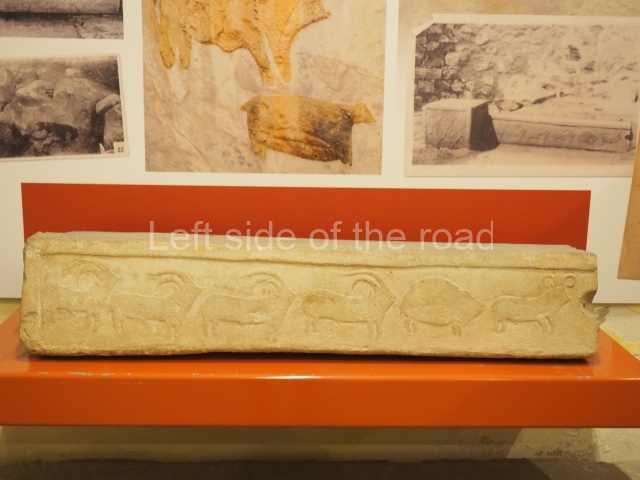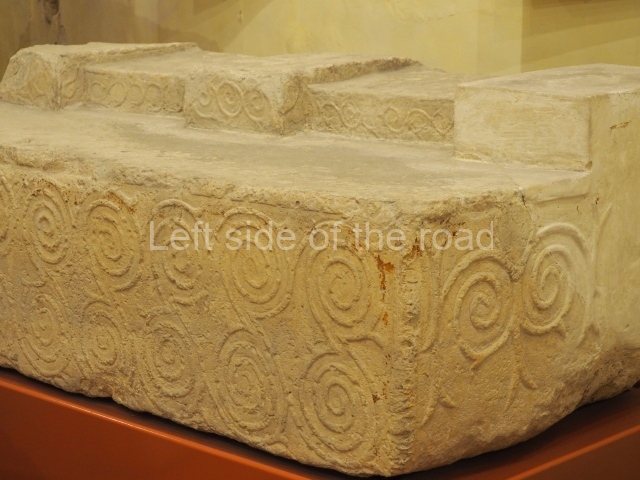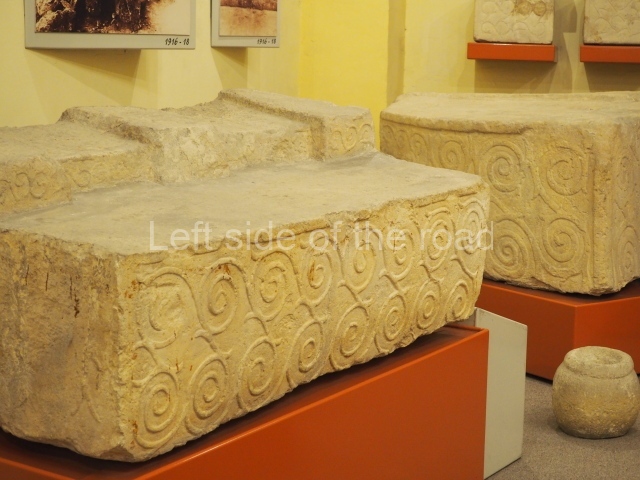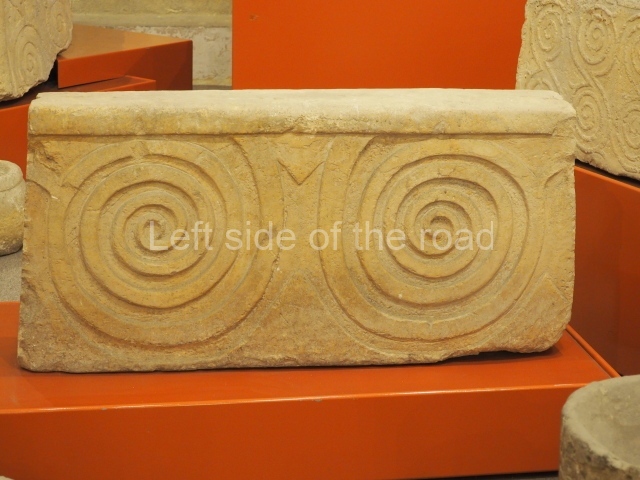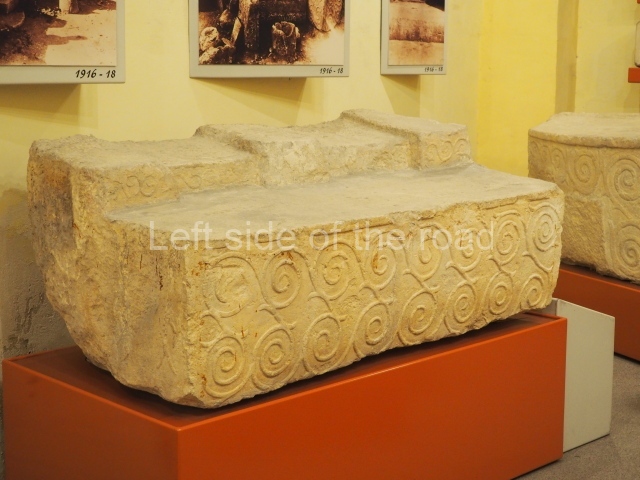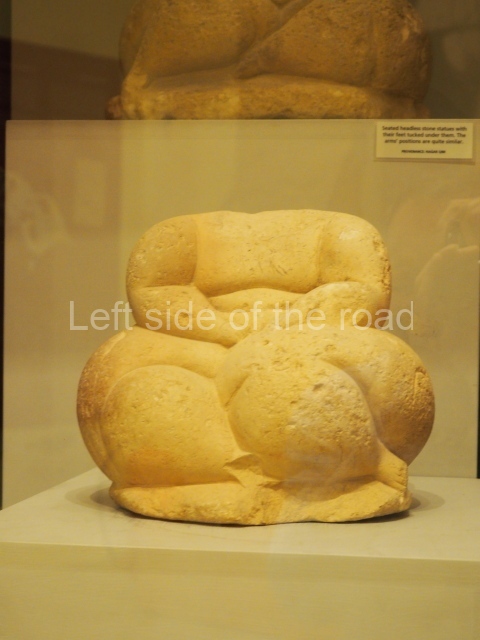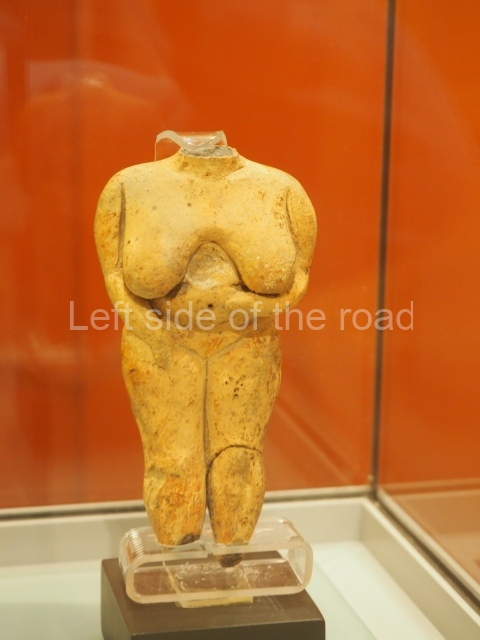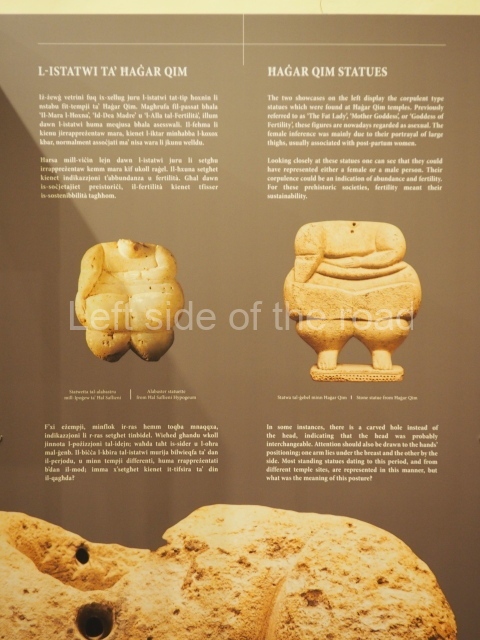Ġgantija Archaeological Park – Gozo
The Ġgantija Archaeological Park complex is a unique prehistoric monument situated at the centre of an extraordinary archaeological landscape, the Xagħra plateau on the island of Gozo. It consists of two structures built between c.3600 and c.3200 BC.
Notwithstanding its age, the monument survives in a considerably good state of preservation. The Neolithic builders made use of both locally sourced Globigerina and Coralline Limestone. The hard-wearing Coralline Limestone is used extensively at Ġgantija, while the softer Globigerina Limestone is reserved for inner furnishings, such as doorways, altars and decorative slabs.
The site consists of two structures, with separate entrances and a common boundary wall. Each unit consists of a number of apses flanking a central corridor. Two plaster fragments with red ochre, now on display at the Ġgantija Archaeological Park Interpretation Centre suggest that the internal walls were plastered and painted over.
Remains of animal bone discovered in this site suggest communal rituals and feasting. The use of fire is shown by the presence of stone hearths. A number of libation holes in the floor may have been used for the pouring of liquid offerings. It is probable that during ceremonial activities, the congregation would have assembled outside the monument, since the large forecourt in front of the two structures was purposely raised by the same builders.
Entrance to the Ġgantija Archaeological Park is from an Interpretation Centre that provides visitors with the opportunity to explore various aspects related to life in the Neolithic Period. The centre is also home to a selection of the most significant artefacts discovered at various prehistoric sites in Gozo.
The above text from Heritage Malta
In a number of ways the archaeological site of Ġgantija is not that impressive as those at Ħaġar Qim, Mnajdra and Ħal Tarxien but they make up for it in the fact that the complex is not covered by a huge ‘tent’ – so you can get a feel of the site as it was originally designed – and the artefacts in the attached museum are impressive and complement those on display in the National Archaeological Museum in Valletta.
The view of the complex is marred by the necessary construction of scaffolding – to prevent the collapse of some of the walls and, more importantly, to reduce the insurance claims of visiting tourists if the wall should collapse on them. The Maltese archaeologists are looking for a less intrusive manner to make the walls safe. Until then perhaps it should be treated like the Burnt School in Glasgow where the scaffolding structure is impressive in its own right – although now that is covered with plastic sheeting. However, with all the ‘delays’ surrounding the Mackintosh building it’s very much likely the Maltese will come up with a viable solution (and a much cheaper one at that) sooner than will the Scots in Glasgow.
Location;
Ġgantija Temples, Triq John Otto Bayer, Xagħra, Gozo
GPS;
36.04915 N
14.26774 E
How to get there;
The bus number 37 takes you to just outside the site entrance leaving from Rabat (Victoria).
Open;
09.00 – 17.00
Entrance;
Adults (18+); €10
Youths (12-17); €8
Senior Citizens (60+); €8
Concessions and Students; €8
Children (6-11); €6
Infants (1-5); Free
The ticket for the Ggantija Archaeological Park also includes entrance to the Ta’ Kola windmill, which is at the end of the road opposite the ticket office.
